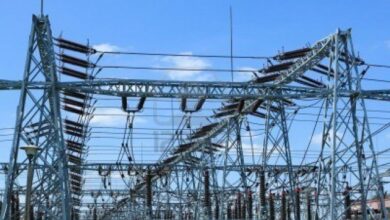DPR Says Nigeria Has 5,300 “Dormant” Oil Reservoirs

The Department of Petroleum Resources (DPR) has revealed that Nigeria has 7,000 reservoirs i.e., rock formations in which oil has been discovered but oil is being produced from only 1,700. This leaves 5,300 of the reservoirs in a ‘yet-to-function’ status.
All production in Nigeria, Africa’s biggest oil producer, has for almost a decade being stuck around 2 million barrels per day. The country’s production has been pegged to 1.4 million barrels per day since April 2020 in a bid by the Organization of Oil Exporting Countries (OPEC) and other oil exporters led by Russia to boost oil prices.
The Director/Chief Executive Officer of the DPR, Auwalu Sarki, made known that Nigeria has the capacity to produce three million barrels per day from the reservoirs at which oil is currently being produced.
Mr. Sardki said, “We took each of the producing reservoirs to see what kind of Enhance Oil Recovery that we need to put. So once we now put the EOR, that is secondary and tertiary recovery methods, technically we will grow the reserves.
Also Read: PIB and Marginal Fields Allocation to Boost Nigerian Oil Reserves to 40 Billion Barrels
“This is because those reserves are recoverable now and technically we will increase the production of the country.”
Looking Up to New Marginal Field Operators
The DPR Chief enjoined marginal field owners to help increase Nigeria’s oil production. Nigeria just concluded a bidding round for marginal fields, allocating a total of 57 fields to about 80 aspiring Nigerian oil producers.
Marginal fields are small oil blocs that Nigeria allocates to indigenous oil companies to boost the country’s oil production but also increase the participation of Nigerian businesses in the country’s oil sector. The fields are considered too small by the international oil companies. The last marginal field bidding round was held in 2003/2004. Mr. Sarki commented that over 40 million barrels of oil were left “fallow” in 17 years.
Also Read: New Anyala Made Oil Fields to Increase Nigeria’s Crude Production by 60000 Barrels
The journey from allocation paper to oil will not be an easy one for the 80 new marginal field owners. The acreages have been allocated not to single companies but groups of unrelated bidding firms who have to find a way to work together. Some co-awardees from the 2003/2004 have had problems working together, contributing to the fact that only 30% of the fields allocated have been fully developed.
The cost of developing marginal fields can run into between $2 to $5 million dollars. Financiers will be looking for evidence that the joint owners of the newly awarded marginal fields have solid legal agreements on ownership and are also committed to a common strategy of raising funds and developing their assets.







